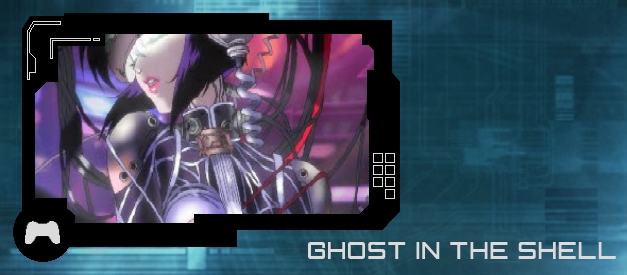
1997 could be the turning point at which Sony took the lead as top billing for video game consoles with the PlayStation thanks in part to its ease of development when compared to what Sega and Nintendo had to offer. And at around the same time, anime was planting itself deeper into American youth culture with syndicated TV shows and VHS tapes entering the country at a faster rate. So it would be no surprise that a video game based on a series that is highly regarded in the anime loving otaku crowds would eventually make its way to local video game retailers. So of course we would have seen a game for the Ghost in the Shell franchise, thus having it now covering the three primary forms of media: print, film, and now games.
Many things could have contributed to making this game a failure. The GitS franchise allows itself to have its game take the form from many different types of genres. An obvious choice would have been a third-person platformer, having the player take the role as Major Kusanagi for her aerobatic jumping thanks to her cybernetic body. It could have been a first-person shooter with Batou, with his military background and love for big guns. And based on its detective narrative, it could even have been an interactive movie point-and-click adventure like Policenauts, which were hot during the mid-ish ‘90s. Thankfully, somehow the first GitS game avoided this minefield and took a more adventurous path, making something rather unique for its time.
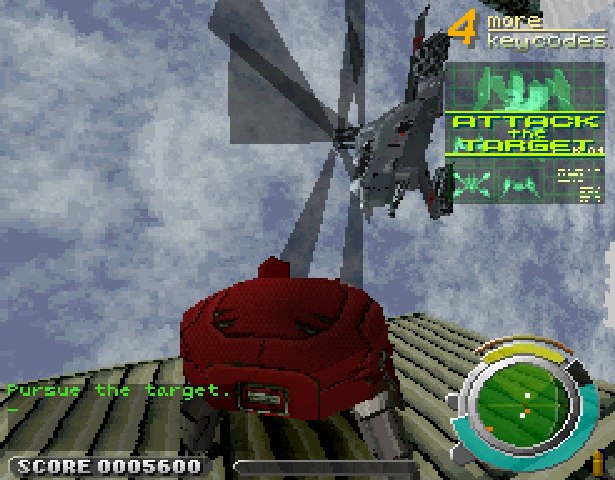
Developer Exact, who made the Jumping Flash! series of games for the PS1, took the reins for this project. They were the team who, early on in the days of polygonal 3D games for consoles, successfully made a platformer in three-dimensions work. For Jumping Flash!, they crafted levels with an open environment that acted like an amusement park with various objects acting like rides to experiment with. Playing as Robbit, a mechanical rabbit, you hop and jump onto numerous elevated levels in an open three-dimensional world, collecting a number of jet pods so to progress to the next stage. The primary gameplay mechanic is jumping, which allows the player to jump very high depending on the number of times the player presses the jump button while in mid-air.
For Ghost in the Shell, they based their game around the single thing that was similar to Robbit: the Fuchikomas. With them, it allowed Exact to easily utilize their unique gameplay style and level building and apply it to creating the world of GitS. For this project they used the same game engine the first two Jumping Flash! games were built with, to where you can see similar visual effects being carried over like the way how clouds quickly scrolled across the sky. However, unlike Robbit with its jumping abilities, they needed a new gameplay mechanic to be the primary focus; or rather two.
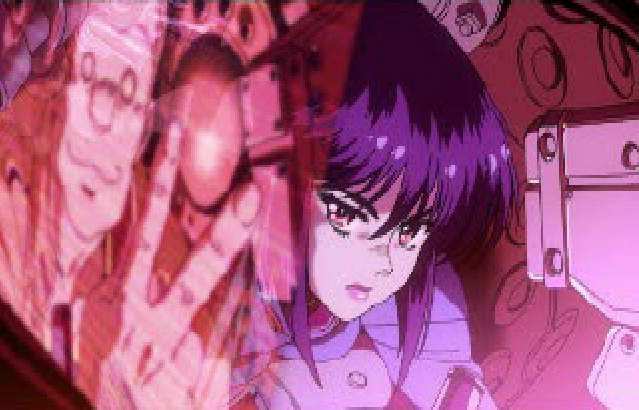
Sure Fuchikomas have the ability to jump, but Robbit has a jump that goes ridiculously high (plus it's supposed to mimic a rabbit, so it makes sense), so moving away from jumping as the primary mechanic, the team instead focused on mobility. In the manga the Fuchikomas can easily run along walls and climb around rooftops with ease and speed, so why not give the player that feeling of riding in a Fuchikoma where you can go almost anywhere. Need to get to the top of that building for scouting? No problem! Need to evade enemy fire? Jump on the wall to avoid getting hit! And because a Fuchikoma can latch itself to move around on walls, it even has the ability to walk on ceilings, leaving for a very disoriented feeling when everything is upside-down, especially when engaged in combat.
Unlike the manga and movie that came before it, the story for the game has zero to do with anything philosophical related to self-identity. Instead, we get a solid helping of tactical action that Section 9 gets involved with. Guns, terrorists, and chase scenes are the center of attention with this installment. Sure it also includes some sleuthing to get to the bottom of what's happening, but it servers only as a purpose to propel the plot forward than being the primary focus.
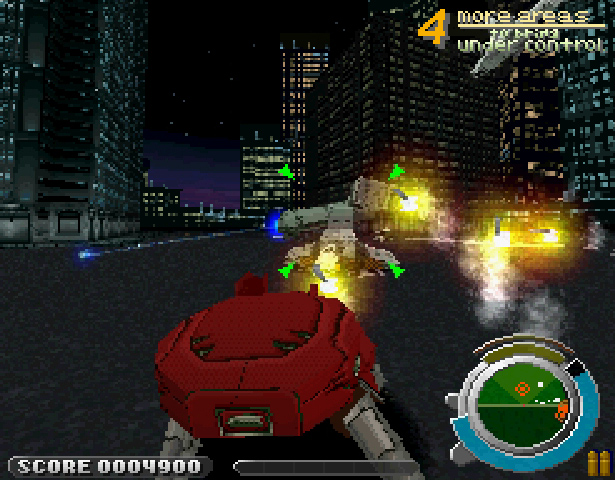
The story portions are FMV cutscenes done with 2D animation rather than utilizing the in-game engine. Done by Production I.G -- the same studio who produced the 1995 feature film -- it's beautifully animated, giving as much attention and quality to it as if it were a production for a movie, but has a different art style when compared to the film. This time they went closer to mimicking Masamune's art, including his comical humor to lighten things up a bit. Although the game's original story wasn't written by Masamune himself, it feels like they did a good job of copying his style so to stay true to the source material, avoiding the oh so familiar problem games have when based on a book or movie where they are seen as an easy way to make a quick buck; and plays like it. You can tell there was a love for the material from the team who made the game and wanted to do it right.
In addition to climbing on walls, the other game mechanic they incorporated for mobility is the ability to slide around. When the Fuchikoma moves about with its legs, it's rather slow moving at a walker's pace. Same goes for when it turns from side to side: it's clunky and rather time consuming. To speed things up, a slide mechanic was added, and it's probably the most used function in the game; even more so than firing weapons. To slide forward or backwards, you press and hold the L1 and R1 buttons along with either the up or down button on the d-pad. Strafing can be achieved by pressing L1 to slide left or R1 to slide right. A circle strafing technique can be done as well by pressing the opposite direction on the d-pad while you are sliding; which is an essential skill to have when fighting bosses.
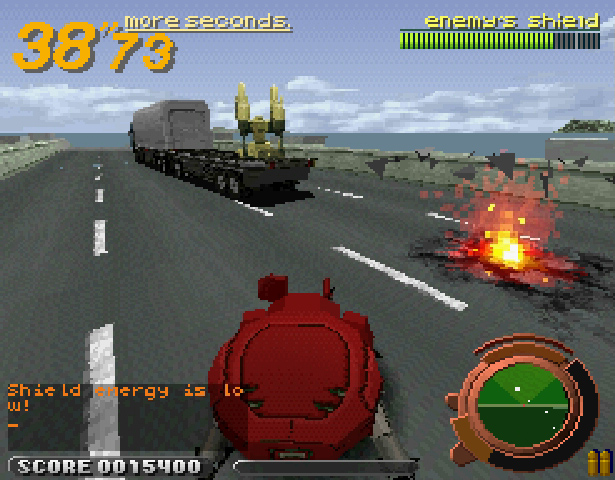
The gameplay when compounded with the cutscenes make this an awesome gaming experience. There's a ton of action to be had shooting down helicopters, racing the clock to defuse bombs, and chases to feel like you're part of Section 9, stopping terrorist plots before they can execute their plan on blowing something up. Now with all of this praising, there has to be some negatives, right? Yep, there is, but it's minor. The only knock there is against it is that it's short. Like, really short. In fact, you can beat the whole game in less than an hour when you play it a second time. This makes it like an interactive action movie: totally fun and awesome, but limited to just a short amount of time. And really, that's all you want out of it as it would be worse if they stretched it out, having it wear out its welcome, so you can't knock it too hard for its short duration.
When looking back, this was Exact's best game before being bought by Sony Computer Entertainment and having the company rebranded as Sugar & Rockets. It was able to make good use out of the game engine that has its roots traced back to the Sharp X68000 computer with a game called Geograph Seal before the team moved over to Sony's console to begin work on Jumping Flash!. And with it, continuing the classic cyberpunk franchise by pushing it into another medium of entertainment.
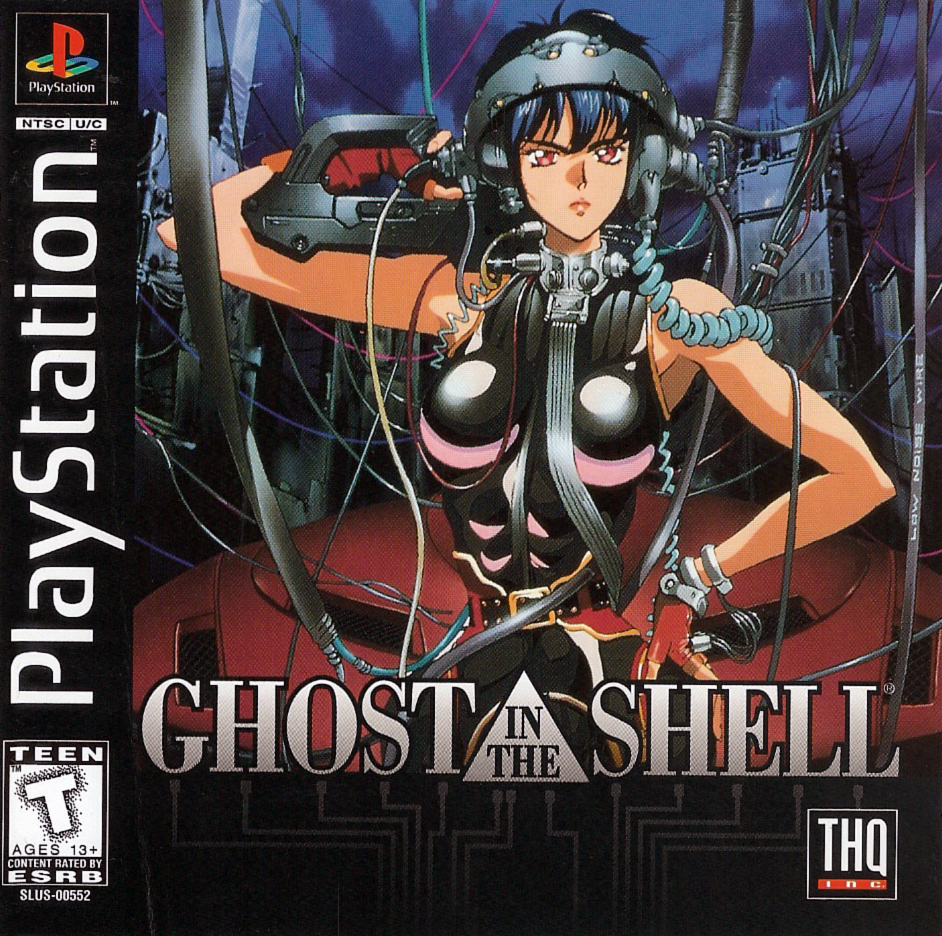 |
Ghost in the Shell
Developer: Exact |
Posted on: January 19, 2017
